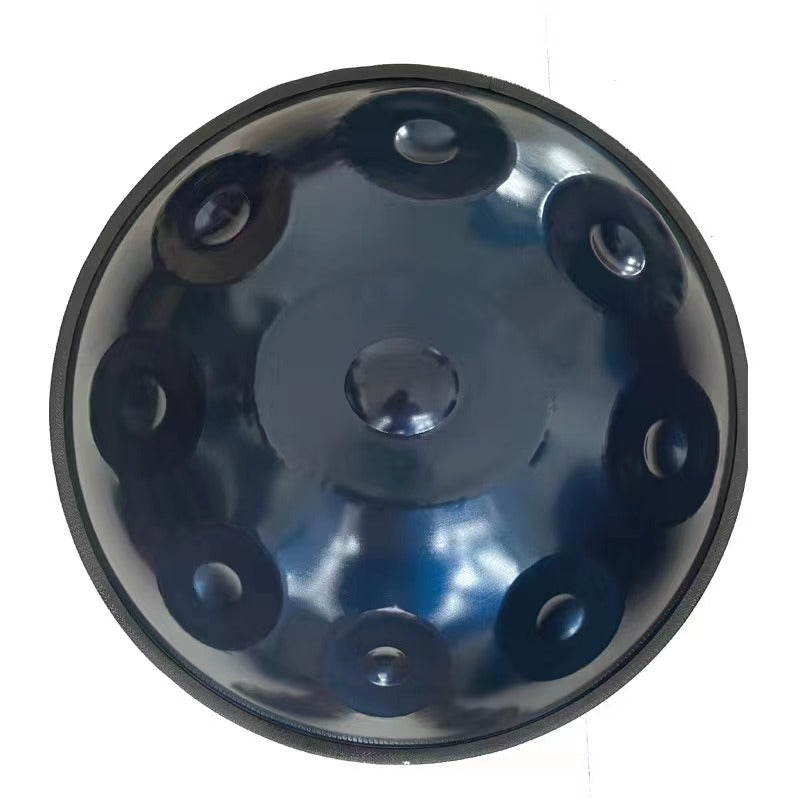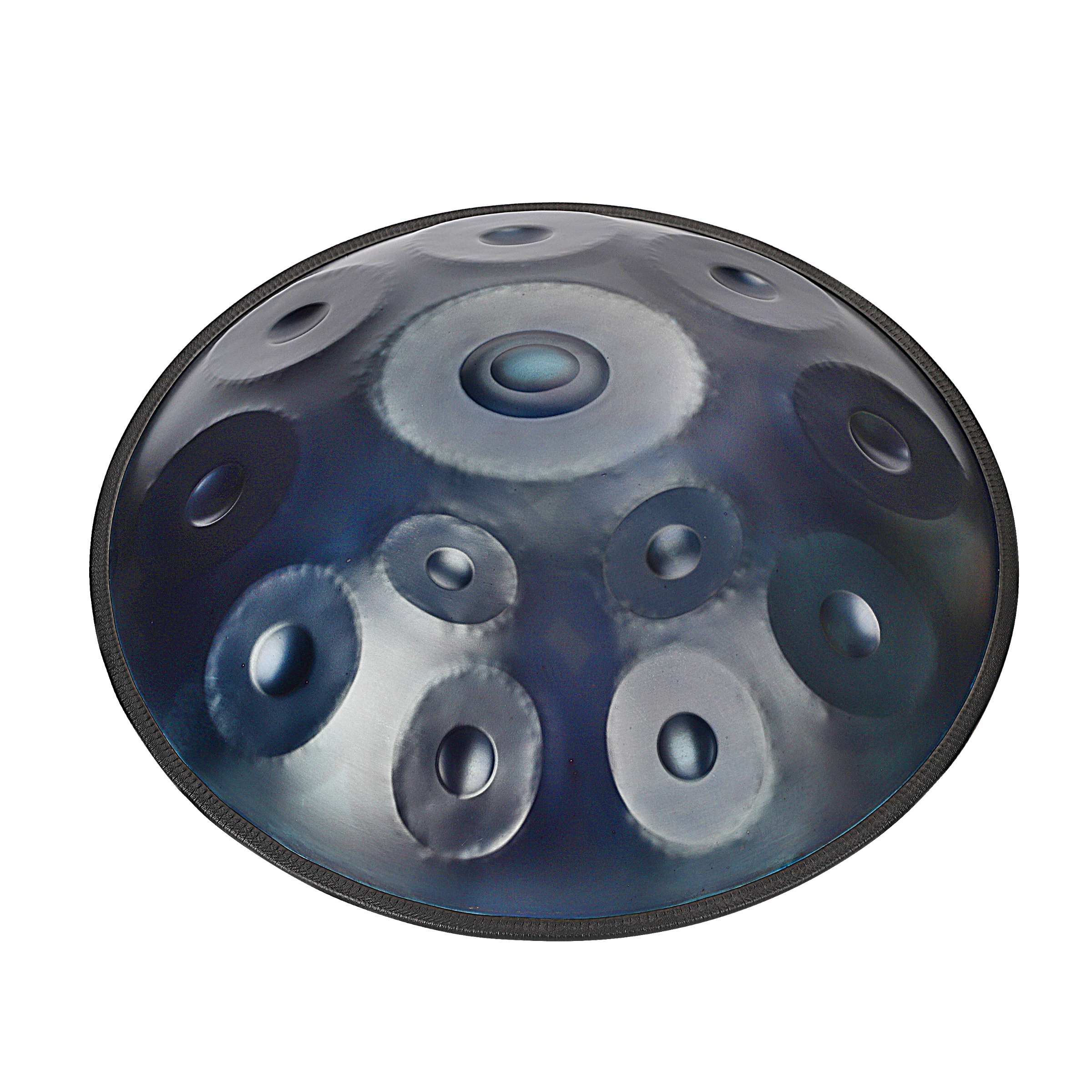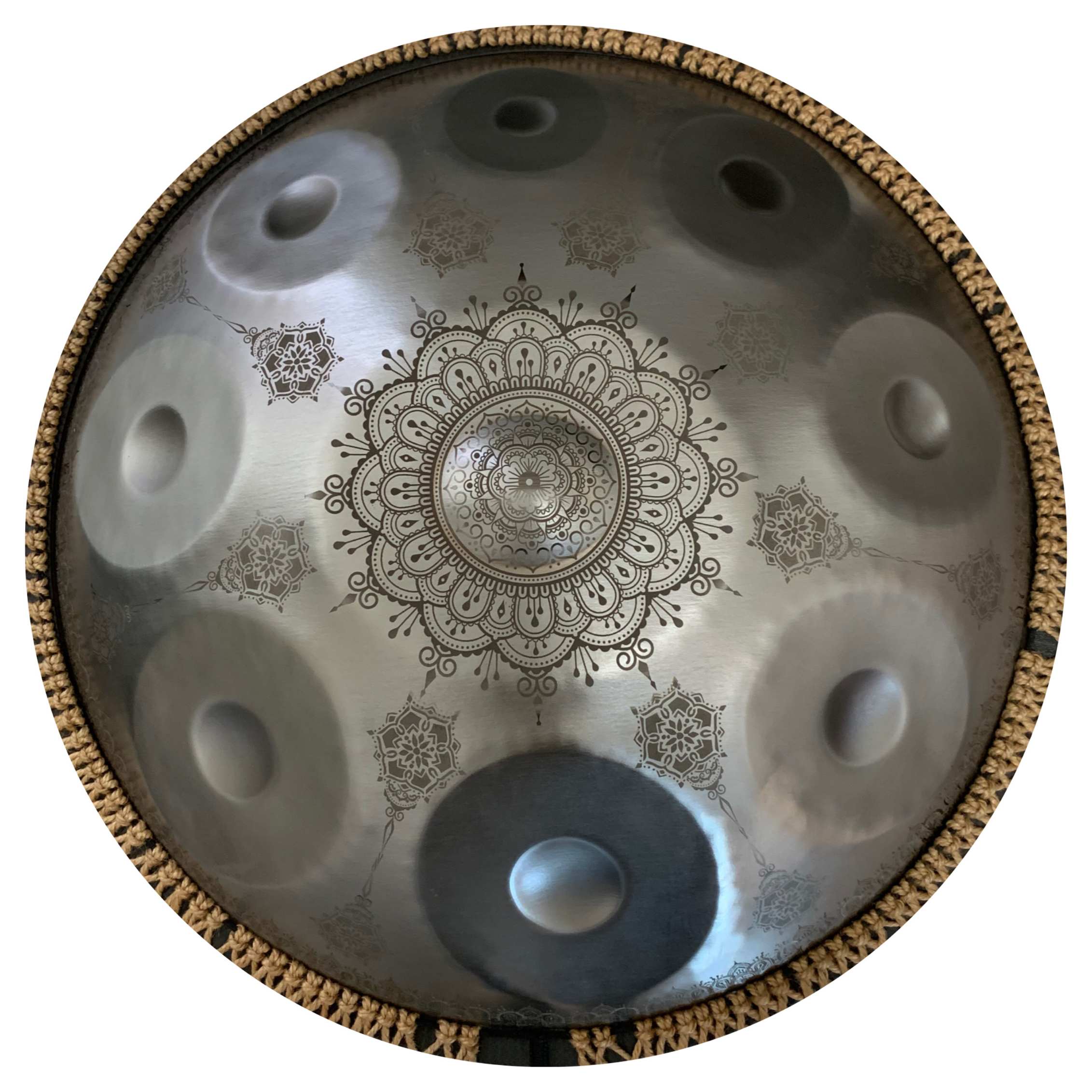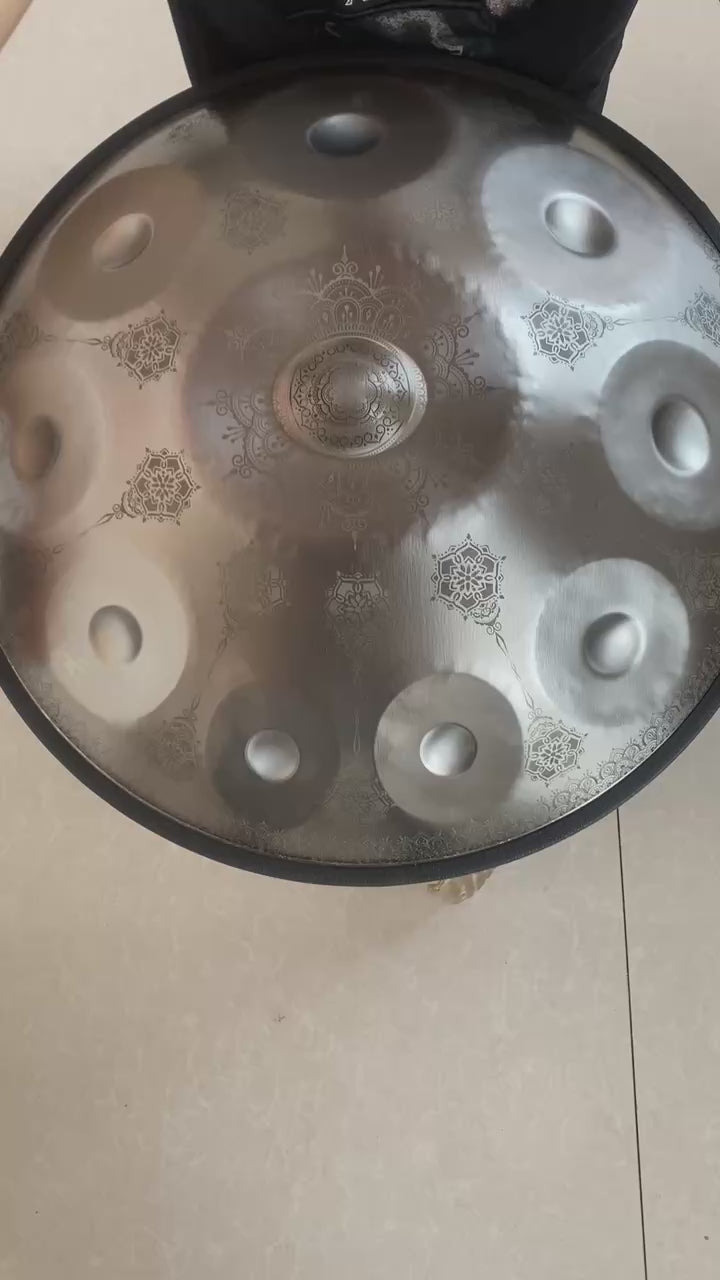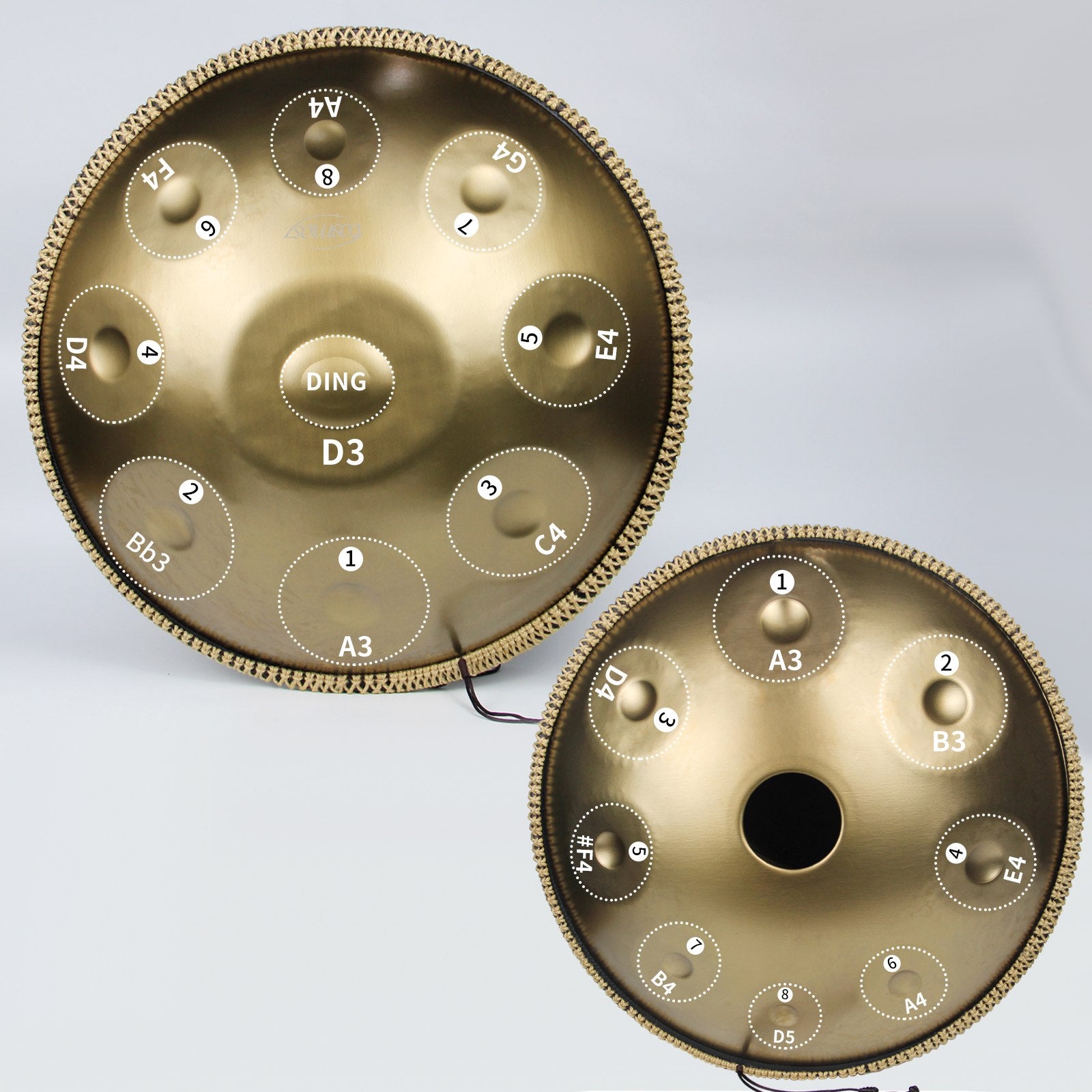
One would love the handpan, the instrument that plays with ethereal tones, which can help you meditate. Playing this handpan drum is an absolutely fulfilling journey, from a novice exploring one of his new musical directions to the experienced musician who wants to be adventurous with a new sound. In this handpan for beginners guide you will learn everything there is to know about the handpan instrument.
1. Start with the Basics
Dive in first with the essentials, then the advanced techniques. Like all instruments, the foundation of everything with a handpan is your ability to produce clean tones and tones that resonate.
Holding the Handpan
- Sit with the handpan steel drum on your lap or a flat surface so you don’t have to worry about tipping the drum.
- Relax and sit comfortably when you allow freedom of movement.
Striking the Notes
- Rub with the pads of your fingers or the soft part of your palm. Never strike with nails or excessive force, or you can damage the instrument.
- It is important, to produce warm and rounded sounds, to have a light, relaxed touch.
Creating Rhythms
- Start with little rhythmic patterns alternating between the central note (ding) and the tone fields around it.
- To practice striking different areas, to get you more familiar with the tonal range of the handpan drum instrument.
2. Practice Consistently
- The most important thing is that you should be practicing regularly and practice focused.
- Allocate a particular time for each day for your technique, as well as your musicality.
Tips for Effective Practice
- Set Goals:Decide what you want to be able to do per session, whether it’s mastering a rhythm or learning a new technique.
- Use a Metronome:To have rhythm precision, keep on to maintain timing consistency.
- Be Patient:Initially it may be slow progress, but it's worth the patience.
3. Explore Beginner Techniques
If you are new to a handpan for beginners, a few fundamental techniques mastered will make a huge improvement in your ability to play.
Playing the Rim
- To play a muted, softer tone, hit the rim of the handpan with fingers or knuckles.
- Play around with different positions on the rim to hear the sound you can achieve.
Alternating Hands
- You should play notes with one hand or the other, switching quickly between the two and inventing lively and dynamic rhythms.
- Alternate hands to strengthen and fluidity of the hands.
Playing with Dynamics
- Adjust your strikes to vary volume and intensity by the force of your hit.
- Play soft and loud notes to make it sound better.
4. Learn from Others
Learning from the music of experienced handpan players can help you to compose and play your own stuff.
Why Study Others?
- You will also gain insights about several different playing styles and techniques.
- Learn how professionals use every inch of the handpan musical instrument.
- Learn to organize your compositions and improvisations.
Resources
- Videos: To see hand movements and techniques, you can watch tutorials and performances online.
- Workshops: Going to handpan workshops, or community meetups, is a fantastic way to meet and spend time with other players.
5. Explore Advanced Techniques
Eventually, you get comfortable, so challenge yourselves with more advanced techniques to widen your sound palate.
Mute Technique
- Once you strike a note, lightly press your finger onto it, making a muted sound.
- To soften transitions, or for percussive effects, use this technique.
Damping Technique
- Strike a note, and place your finger on the note immediately to cut out the sound completely.
- But this technique is great for adding what I call staccato effects and rhythmic variety.
6. Maintain Your Handpan
A properly maintained handpan steel drum will produce far better sound and last much longer.
Tips for Care
- Keep It Clean: After use, wipe the surface with a soft cloth, removing dirt and oils.
- Store Properly: Make sure you get a padded case to protect it against scratches and from the environment.
- Avoid Extreme Temperatures: The steel can be harmed by heat or cold, and their tuning and integrity are affected.
Tuning
Your handpan is staying in tune. Playing an out-of-tune instrument is stressful & counterproductive to your learning.
7. Create Your Own Style
Because of its ability to express personal expression, the handpan instrument is very versatile. If you started out experimenting with different techniques, scales, and rhythms, you will have a unique playing style.
Improvisation
- Free flow a melody through the handpan's natural resonance.
- Element is a synthesizer that combines learned rhythms with spontaneous creative ventures to produce an interesting sound.
Composition
- Music will be structured, layer by layer, with rim playing, alternating hands, and the addition of dynamics.
- Have fun with different scales and keys to attain very different moods.
8. Avoid Common Pitfalls
To ensure consistent progress, be mindful of common mistakes:
Don’t Hit Too Hard
Excess force will damage the instrument and produce an unappealing result. It’s also effective and safe.
Don’t Skip Practice
In order to build muscle memory, you have to practice something often enough and regularly. If you skip sessions, you'll slow your progress.
Never Compare Yourself With Others.
No two players journeys are the same. Don’t focus on other people’s successes, and celebrate your own small victories.
Don’t Give Up
It doesn't take months to learn the handpan. Stay motivated, and if you work at it, you can get better.
9. So, what’s the best handpan to buy for a beginner?
Choosing the right handpan, you can enjoy learning.
Factors to Consider
- Material: The tough and durable stainless steel is played off against nitrided steel’s rich tones.
- Tuning: Pick out a handpan tuned in a D minor scale, a beginner-friendly scale.
- Budget: Models novice usually start from about $800 to $2,000.
Recommended Options
The good part is you can research reputable brands and read reviews to find a high-quality handpan steel drum that fits your needs.
10. Join the Handpan Community
Being part of a supportive community can help to improve your learning experience. Connect with other handpan enthusiasts through:
- Online Forums: If you have any questions or would like to share tips with others, be my guest and do so.
- Social Media: Follow handpan artists and especially groups.
- Local Meetups: Join handpan events or jams and learn and collaborate.
Conclusion
Playing the handpan musical instrument is a rewarding thing to learn and involves creativity, discipline, and self-expression. It’s possible to unleash the full potential of this extraordinary instrument with a bit of mastering of the basics, a lot of practice, and a little exploration of advanced methods.
The handpan drum is great no matter if you’re new to it or if you’ve been doing it for a while; it can open up an infinite number of possibilities for you to create haunting melodies and catchy rhythms. Enjoy the process and the wonderful link this great instrument provides to your journey in music.


